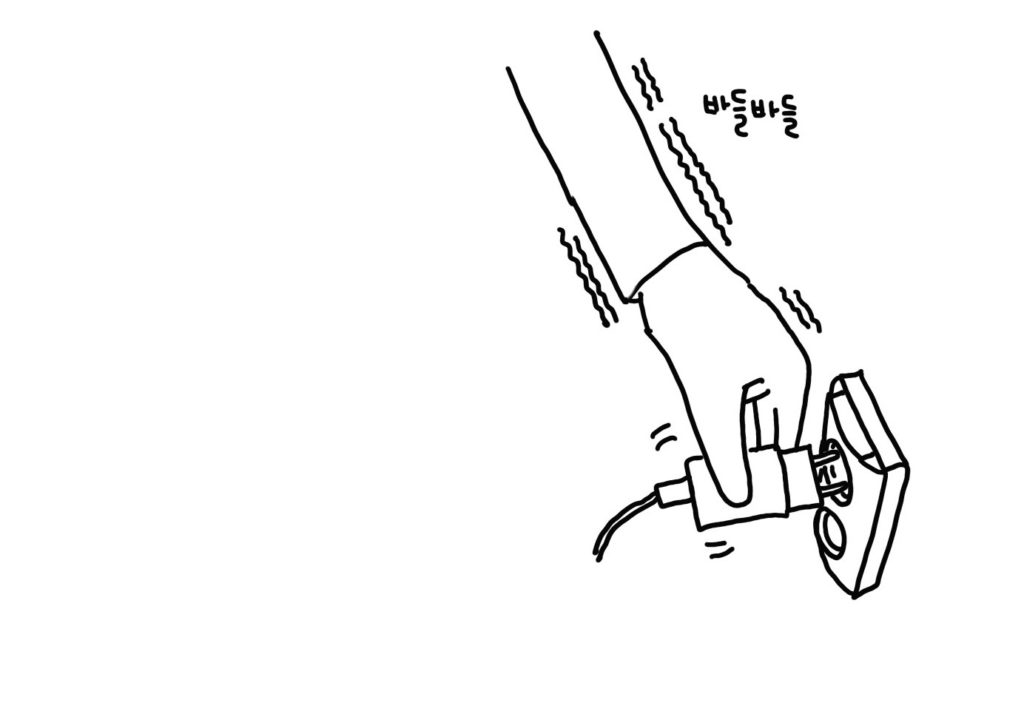
You know those moments when you’re feeling good, but then suddenly your frustration explodes like a volcano? 🌋 One of those times is when you have to reach deep under the desk to plug in your laptop’s power plug without being able to see the outlet.
Logically, the plug should fit before you rotate it 180 degrees, but strangely, even after spinning it 360 degrees, it just won’t go in. Twisting your neck, bending your head, and folding your shoulders into a pretzel-like position while spinning the plug can make your frustration skyrocket in an instant. It’s not just physically exhausting, it’s maddeningly illogical. It’s not like the outlet is the Bermuda Triangle… 🔺
But, just recently, I cracked this age-old human mystery.
When you look at this phenomenon through the lens of quantum physics, the clue starts to reveal itself. It’s because your head is above the desk, and you can’t see the outlet beneath – in other words, you can’t observe it. Before it’s observed, the outlet exists in a superposition of having and not having plug holes, and the power plug could be either European or American style. That’s why it becomes hard to plug in based on past observations. 🌀
The boundary between the macro world of classical mechanics and the micro world of quantum mechanics is inherently fuzzy, and scientists must have always felt uneasy about it, even if they couldn’t say it out loud. Applying different formulas in the same space-time is illogical. But somehow, today, I feel like I’ve found that boundary. It’s right there at the edge of the micro world where the outlet and the plug reside. 🔌
Thanks to the pandemic, it’s not easy to travel anywhere, so I’ll politely decline the Nobel Prize – though I’m grateful. Instead, feel free to cite this in your papers. ✍️
Leave a Reply